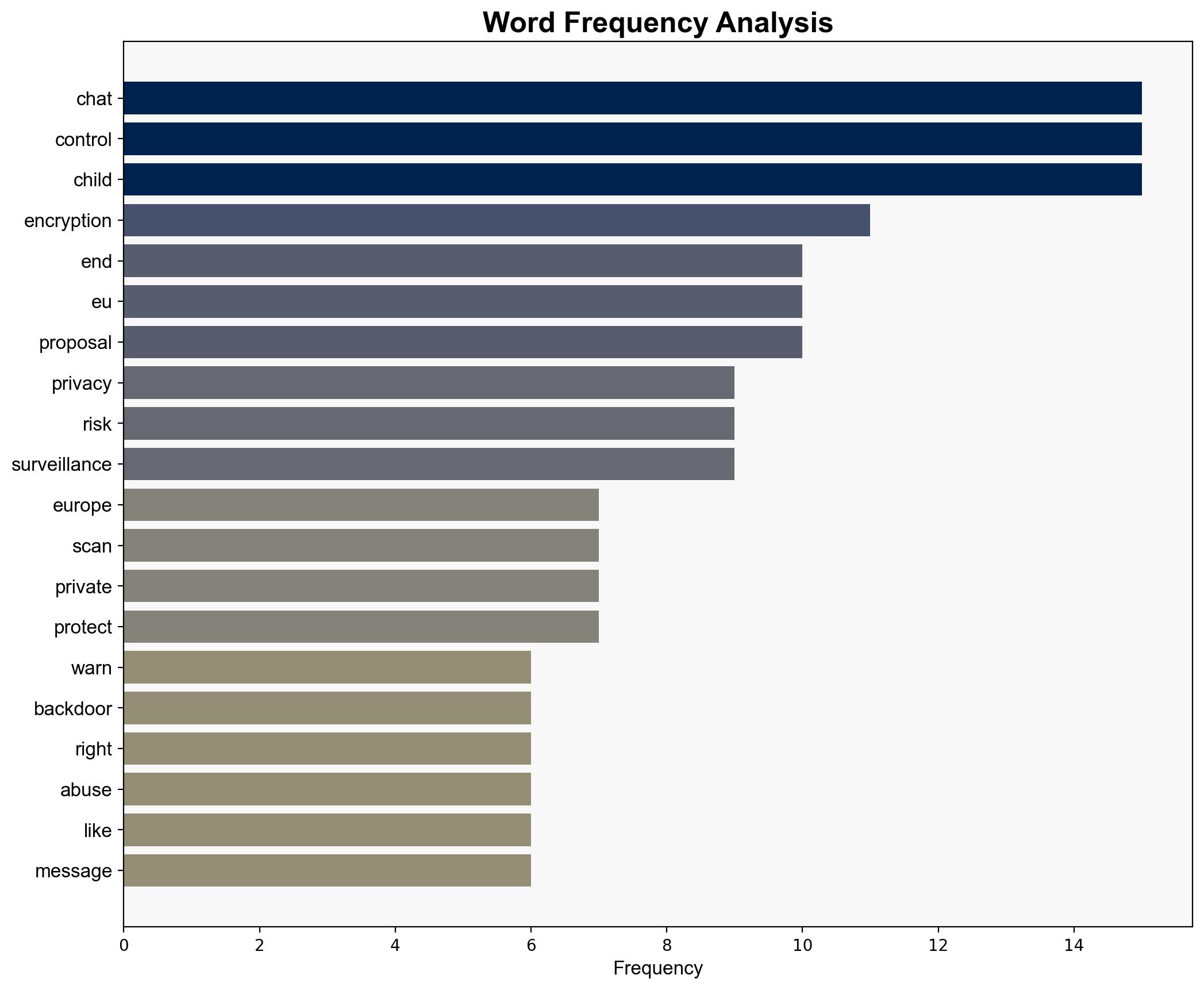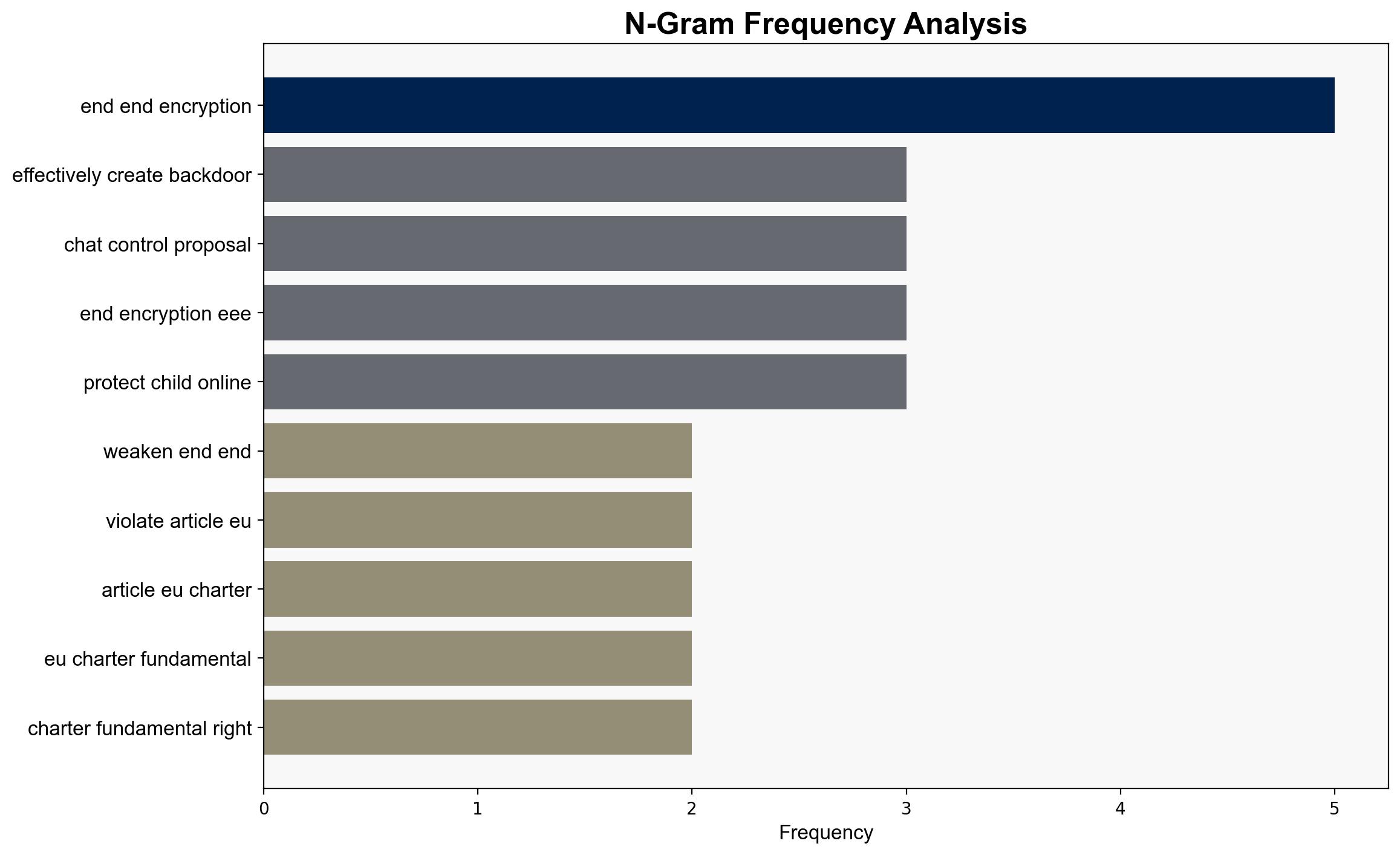A Closer Look at the EUs Chat Control Debate Safety vs Surveillance – Techreport.com
Published on: 2025-09-05
Intelligence Report: A Closer Look at the EUs Chat Control Debate Safety vs Surveillance – Techreport.com
1. BLUF (Bottom Line Up Front)
The debate over the EU’s Chat Control proposal highlights a significant divide between prioritizing child safety and preserving privacy rights. The hypothesis that the proposal will lead to increased surveillance and privacy erosion is better supported due to the inherent risks of weakening encryption. Confidence level: Moderate. Recommended action: EU policymakers should consider revising the proposal to balance child protection with robust privacy safeguards.
2. Competing Hypotheses
1. **Hypothesis A**: The Chat Control proposal is essential for child safety and will effectively reduce the spread of child sexual abuse material (CSAM) online.
– **Supporting Evidence**: Strong backing from countries like France, Spain, and Italy; emphasis on proactive measures to combat CSAM.
– **Structured Analytic Technique**: Bayesian Scenario Modeling suggests a moderate probability of achieving child safety goals but with significant privacy trade-offs.
2. **Hypothesis B**: The Chat Control proposal will lead to mass surveillance, undermining privacy and encryption, with limited impact on child safety.
– **Supporting Evidence**: Criticism from Belgium, Austria, and Poland; concerns about creating backdoors in encryption.
– **Structured Analytic Technique**: Analysis of Competing Hypotheses (ACH) indicates a higher likelihood of privacy erosion due to technical vulnerabilities introduced by client-side scanning.
3. Key Assumptions and Red Flags
– **Assumptions**: Hypothesis A assumes that technical measures can be implemented without significant privacy breaches. Hypothesis B assumes that any weakening of encryption will be exploited by malicious actors.
– **Red Flags**: Lack of empirical evidence supporting the effectiveness of automated detection systems; potential bias in framing the proposal as solely a child protection measure.
– **Blind Spots**: Insufficient consideration of alternative child protection strategies that do not compromise encryption.
4. Implications and Strategic Risks
– **Economic**: Potential impact on tech companies required to implement costly scanning technologies.
– **Cyber**: Increased vulnerability to cyber threats if encryption is weakened.
– **Geopolitical**: Risk of setting a precedent that could embolden authoritarian regimes to justify surveillance.
– **Psychological**: Public backlash against perceived overreach could undermine trust in EU institutions.
5. Recommendations and Outlook
- Revise the proposal to incorporate stronger privacy protections and explore alternative child protection measures.
- Conduct a comprehensive impact assessment of client-side scanning technologies.
- Best Case: Revised proposal balances child safety with privacy, gaining broad support.
- Worst Case: Proposal leads to widespread surveillance, damaging public trust and privacy rights.
- Most Likely: Ongoing debate with incremental adjustments to address privacy concerns.
6. Key Individuals and Entities
– No specific individuals named in the source text.
– Entities: EU member states (France, Spain, Italy, Belgium, Austria, Poland), tech companies, civil liberty organizations.
7. Thematic Tags
national security threats, cybersecurity, privacy rights, EU policy, child protection





